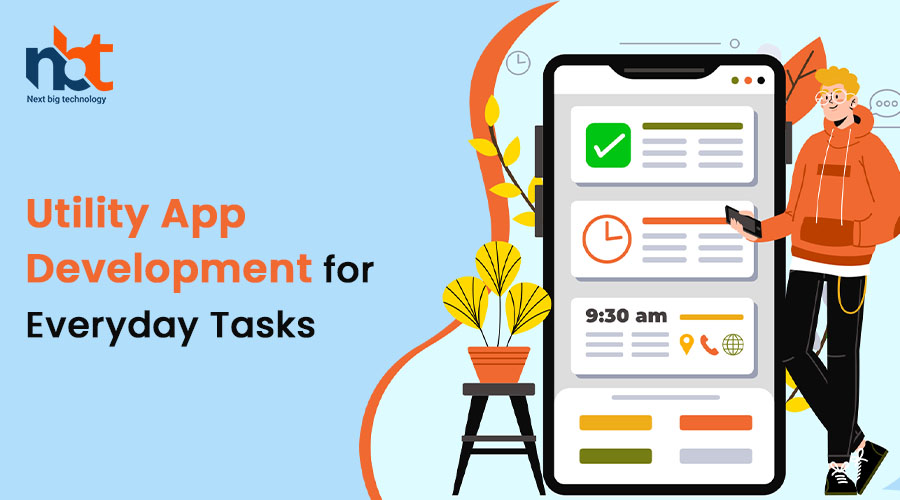Table of Contents
Introduction
In the fast-paced digital era, utility apps have become an indispensable part of our daily lives. These applications cater to a wide range of tasks, offering convenience and efficiency. Let’s delve into the world of utility app development, exploring its evolution, key features, popular categories, development process, challenges, success stories, and future trends.
Evolution of Utility App Development

Historical Overview Utility apps have come a long way since the early days of mobile technology. Initially, basic utility apps focused on simple tasks like note-taking and reminders. Over time, technological advancements paved the way for more sophisticated applications.
Technological Advancements The evolution of utility apps is closely tied to the rapid progress in mobile technology. The integration of advanced features such as GPS, sensors, and cloud computing has transformed utility apps into powerful tools that enhance various aspects of our daily routines.
Key Features of Utility Apps
User-Friendly Interface One of the fundamental characteristics of successful utility apps is a user-friendly interface. Developers prioritize simplicity and ease of use to ensure that users can navigate the app effortlessly.
Offline Functionality Utility apps are designed to offer functionality even in the absence of a stable internet connection. This ensures that users can rely on the app’s features regardless of their location or network availability.
Customization Options To cater to diverse user needs, utility apps often provide customization options. This allows users to tailor the app according to their preferences and requirements, enhancing the overall user experience.
Popular Categories of Utility Apps
Productivity Apps Apps like Evernote and Trello fall under the productivity category, helping users organize tasks, collaborate with others, and boost efficiency in both personal and professional settings.
Health and Fitness Apps MyFitnessPal and Strava are examples of utility apps focused on health and fitness. They offer features such as workout tracking, nutritional guidance, and goal setting to promote a healthier lifestyle.
Finance Management Apps Utility apps like Mint assist users in managing their finances by providing budgeting tools, expense tracking, and financial insights, empowering individuals to make informed financial decisions.
The Process of Utility App Development
Research and Planning Successful utility app development begins with thorough research and planning. Developers analyze market trends, identify user needs, and create a detailed plan outlining the app’s features and functionalities.
Design and Prototyping The design phase involves creating a user interface that aligns with the app’s purpose. Prototyping allows developers to test the app’s design and gather feedback before moving on to the development stage.
Development and Testing During the development stage, coding takes place, bringing the app to life. Rigorous testing ensures that the app functions smoothly, free from bugs or glitches, before it is released to the public.
Challenges in Utility App Development
Compatibility Issues Ensuring compatibility across various devices and operating systems poses a significant challenge in utility app development. Developers must optimize the app for a seamless user experience on different platforms.
Security Concerns As utility apps often deal with sensitive information, security is a top priority. Developers must implement robust security measures to protect user data and maintain user trust.
User Adoption Despite the utility a new app may offer, gaining user adoption can be challenging. Developers need to implement effective marketing strategies to promote the app and encourage users to integrate it into their daily routines.
Successful Examples of Utility Apps

Evernote Evernote, a note-taking app, has gained widespread popularity due to its simple yet powerful features. Users can create, organize, and sync notes across devices, enhancing productivity.
MyFitnessPal MyFitnessPal revolutionizes health and fitness tracking. With features like calorie counting and exercise logging, it helps users achieve their fitness goals by providing valuable insights into their lifestyle.
Mint Mint, a finance management app, simplifies budgeting and expense tracking. It provides users with a comprehensive view of their financial health, empowering them to make informed financial decisions.
Future Trends in Utility App Development
Integration of Artificial Intelligence The future of utility apps lies in the integration of artificial intelligence. AI can enhance personalization, automate tasks, and provide more intelligent insights based on user behavior.
Augmented Reality Applications Utility apps incorporating augmented reality are on the rise. Imagine a shopping app that allows you to virtually try on clothes or a navigation app that overlays directions onto the real world through your smartphone camera.
Internet of Things (IoT) Integration As IoT continues to expand, utility apps will increasingly connect with smart devices, offering users greater control over their surroundings. Smart home management apps are a prime example of this trend.
Impact of Utility Apps on Daily Life
Increased Efficiency Utility apps streamline tasks, saving users time and effort. Whether it’s managing finances, staying organized, or tracking health, these apps contribute to increased efficiency in our daily lives.
Enhanced Convenience The convenience offered by utility apps is unparalleled. From accessing information on the go to automating routine tasks, these apps make life more convenient and enjoyable.
Changing Lifestyle Patterns The prevalence of utility apps has led to a shift in lifestyle patterns. People now rely on their smartphones for various tasks, influencing how they work, communicate, and manage their time.
Tips for Developing a Successful Utility App
User-Centric Approach Prioritize user needs and preferences throughout the development process. Conduct user testing to gather feedback and make necessary improvements.
Regular Updates and Improvements To stay relevant in the dynamic tech landscape, regularly update the app with new features and improvements. This demonstrates commitment to user satisfaction and ongoing development.
Marketing Strategies Effective marketing is crucial for a utility app’s success. Utilize social media, app store optimization, and other channels to create awareness and attract users.
Case Studies
Case Study 1: Successful Utility App Launch Explore how a well-received utility app achieved success by addressing a specific user need and implementing an effective marketing strategy.
Case Study 2: Overcoming Development Challenges Learn from a case study highlighting the challenges faced during utility app development and the strategies employed to overcome them.
User Feedback and Reviews

Importance of User Feedback User feedback is invaluable for improving the app. Engage with users through reviews and surveys to understand their experiences and address any concerns.
Addressing User Concerns Proactively address user concerns raised in feedback. This not only improves the app but also demonstrates responsiveness to user needs.
Conclusion
In conclusion, utility app development has evolved into a dynamic and essential aspect of our digital lives. From productivity to health and finance, these apps play a pivotal role in enhancing various facets of our daily routines. As technology continues to advance, the future holds exciting possibilities for utility apps, promising even greater convenience and innovation.
FAQs
-
What is a utility app?
- A utility app is a software application designed to perform specific tasks, providing convenience and efficiency in daily life.
-
How do utility apps impact daily life?
- Utility apps streamline tasks, enhance efficiency, and contribute to changing lifestyle patterns by offering convenience in various aspects of daily life.
-
What are the challenges in utility app development?
- Challenges include ensuring compatibility across devices, addressing security concerns, and overcoming user adoption hurdles through effective marketing.
-
Can anyone develop a utility app?
- While the development process requires technical expertise, anyone with a well-researched idea and a dedicated team can embark on utility app development.
-
How do utility apps stay relevant in a rapidly changing tech landscape?
- Utility apps stay relevant by incorporating regular updates, embracing emerging technologies, and addressing user feedback to meet evolving user needs.
Thanks for reading our post “Utility App Development for Everyday Tasks”. Please connect with us to know more about Streamline Your Life with Utility App Development.











